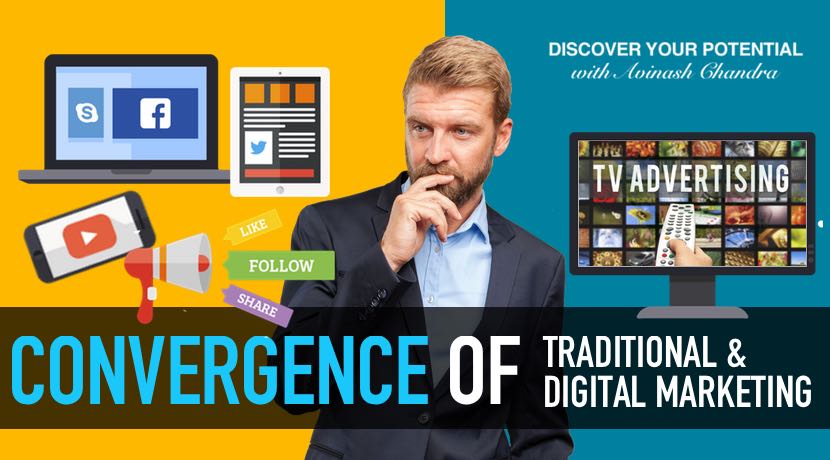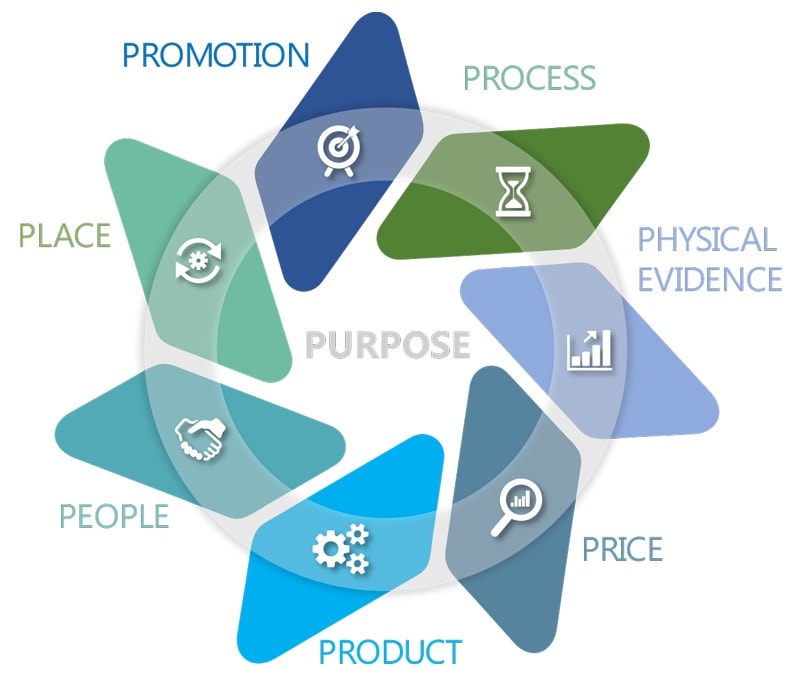The focus of marketing is slowly shifting towards digital. I have heard people talking about how digital marketing is so much superior to traditional marketing.
Some say digital marketing is going to eclipse traditional marketing, then some say both are going to coexist.
Traditional Marketing vs Digital Marketing
Difference between TV and the internet was how far you sat from the screen. TV was an 8 foot activity, and you were a consumer. The internet was a 16 inch activity, and you participated. I think the sitting down thing is similar. You’re not going to buy an armoir while standing on the subway.
Seth Godin
Is there a merit in discussing Traditional Marketing vs Digital Marketing.
Or if the history is repeating itself (Time in history when electronic media took it wings and print media started losing its dominance) this time with the evolution of digital marketing.
Just like Print & TV, are we moving towards the convergence of the two?
In a survey of over 330 organizations, 98% of respondents said that offline (traditional) and online marketing are merging.(3)
The above statement from Interaction 2017 report says a lot. It is not about Traditional Marketing vs Digital Marketing, but about the convergence of the two. To be successful, a marketer needs to leverage the two to build their value proposition and consumer experience.
We are seeing changes in underlying technologies in both hardware and software that are advancing us from the Information Age to the Intelligence Age.(1)
The above is happening at a rapid pace. IoT is something which is driving the above and it is going to revolutionise the marketing in future.
It is all about consumer
As a marketer, my decisions will always be driven by consumer needs.
I believe that consumers today hardly compartmentalizes between digital or traditional media. For them these are touch-points. Their needs and demands determine their interaction with the media.
Therefore, As a marketer why would you consider or deploy them separately?
Deployment of a marketing strategy should encompass both digital and traditional marketing techniques to help you meet consumer demand.
Therefore, you need to think digital when you make your marketing plans. However, when I say think digital what I mean is that you must include digital in your marketing communication plans and use it to take better decisions of your traditional marketing techniques.
The unending debate
You must be wondering:
If consumer does not care about the difference between digital and traditional marketing, then why everyone is always talking about Traditional Marketing vs Digital Marketing.
Why the debate?
Well, the reason is within our sales and marketing organisations.
Our marketing teams still live in silos, therefore to accommodate them our marketing strategy and process also still lives in the dark ages.
While several large organizations just focus on Traditional marketing methods. New generation startups put a lot of energy in digital marketing practices.
Look at ubiquitous giants like Google or Apple, these brands are investing in both traditional & digital marketing methods.
For consumers digital or traditional media are a way to achieve their ends. Therefore, both traditional media and conventional media must coexist.
Both need to support each other to enable the consumer take an informed decision.
Rapid Growth of Digital Media
This is another reason due to which Traditional Marketing vs Digital Marketing debate is unending.
As per Interaction 2017(1) Digital media is growing faster than traditional media. In 2016, digital marketing methods captured 72 cents of every new ad dollar and TV 21 cents. In 2017 this is projected to be 77 to 17.
However, what you must note is that digital is still not as big as traditional TV – yet.
The share of TV advertising was 42% in 2016 and is projected to be 41% in 2017. The share of digital marketing is 30.7% in 2016 and is expected to go up to 33% in 2017.
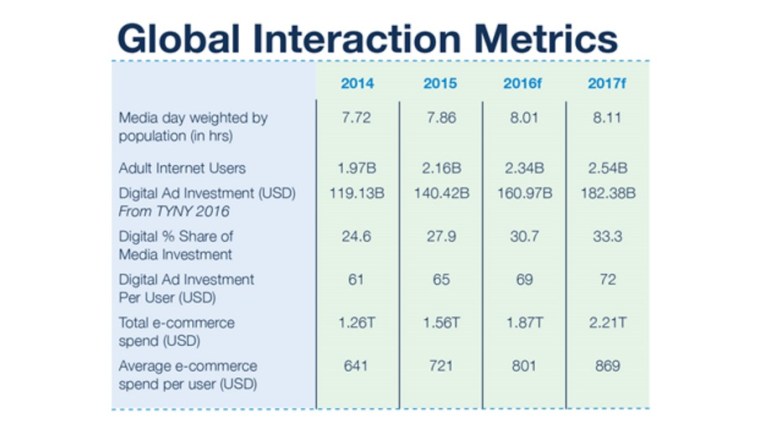
Digital marketing media is growing with small-sized advertisers and thereby winning share from traditional marketing media. However, the large advertisers are still not using it as they should.
Digital marketing media will take some time before it starts to gain share from big advertisers, who still prefer traditional marketing media for building the brand. This is primarily happening as big advertisers want to have control over the content where their brands are featuring.
Big Advertisers have been concerned about the quality issues digital marketing media have been posing advertisers of late.
Why CMO’s Need to Become the Digital Evengalists
As per a McKinsey survey,(8) marketing and distribution are the primary focus of organisational digital drive. Almost 49% of companies have reported investment in digital for marketing and distribution.
Consumer adoption of digital is growing at a rapid pace. Therefore, it is quite sensible that organisations are using it for customer interactions and marketing.
As a CMO, you can help other members of the management team understand and adopt digital and help your organisation stay ahead of the competition.
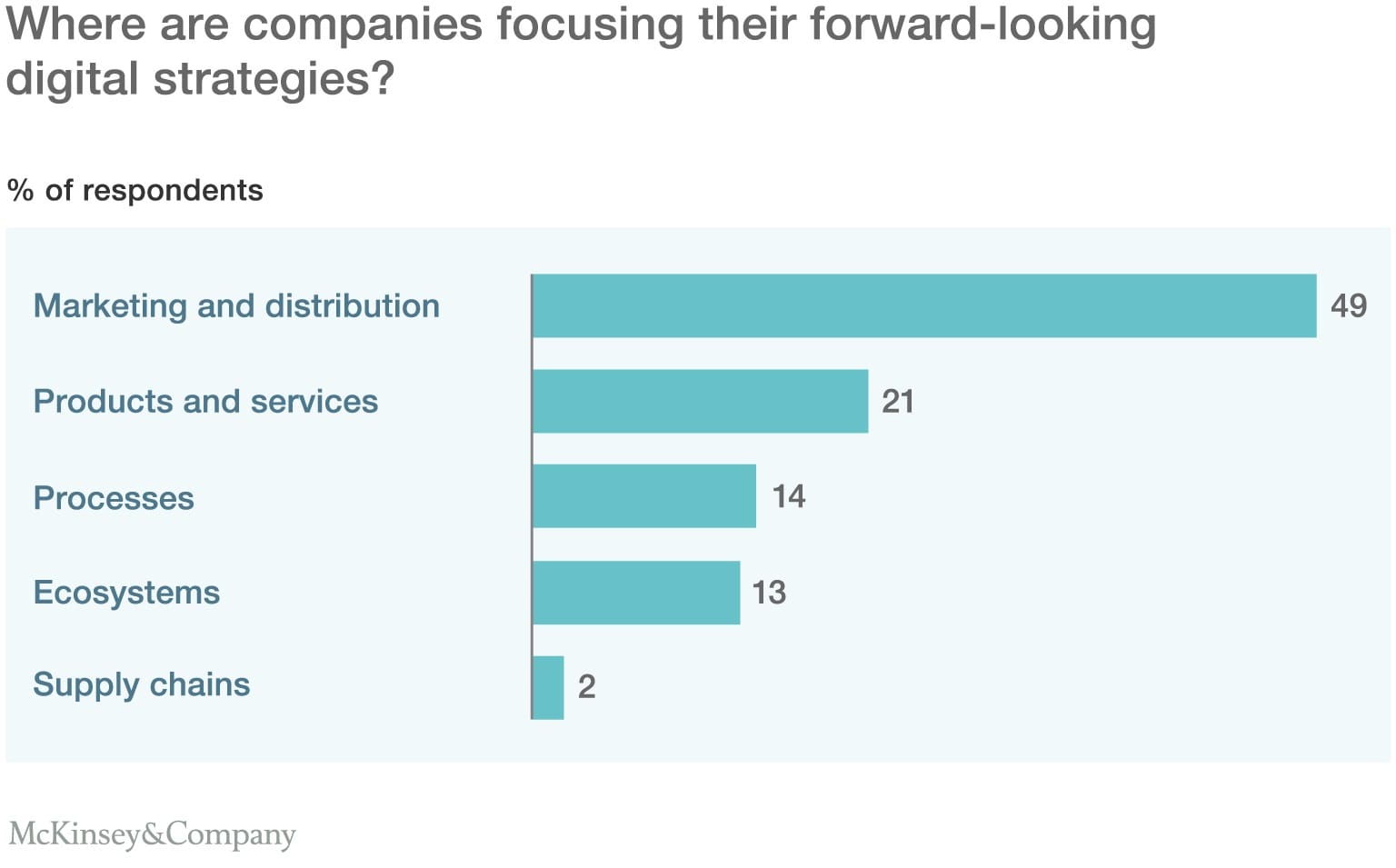
Why CMO’s need to focus on Convergence
Consider a consumer buying cycle. A customer goes through several stages before she makes her mind.
As per a research by McKinsey,(5) proliferation of media and products requires marketers to find new ways to get their brands included in the initial-consideration set that consumers develop as they begin their purchasing decision journey.
Mckinsey also concluded that due to the shift away from one-way communication—from marketers to consumers—toward a two-way conversation, marketers need a more systematic way to satisfy customer demands and manage word-of-mouth.
Therefore as a CMO, you need to align all the elements of marketing. Your marketing strategy, investments, channel selection and messaging should be tuned to the consumer’s decision journey.
Technology Focus of CMO’s
Market Research firm Gartner(2) predicted that by 2017 a company’s chief marketing officer would be spending more on technology than the chief information officer.
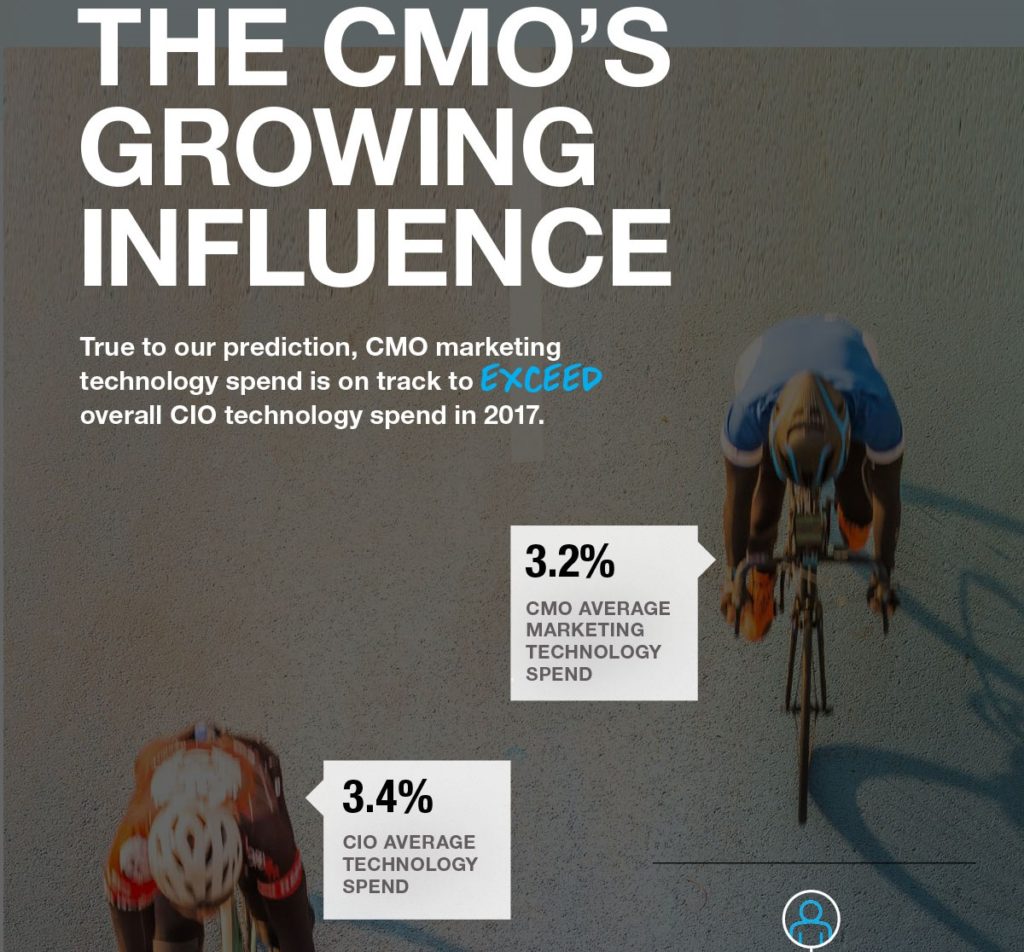
That seems to be on track. Take a look at this infographic talking about technology spending in 2016 from Gartner.
The focus of CMO’s technology spends are in the following three areas:
- Website
- Digital Commerce
- Digital Advertising
Their investment in the three areas is driven by increasing convergence of traditional marketing methods and digital marketing methods.
In a survey of over 330 organizations, 98% of respondents said that offline (traditional) and online marketing are merging.(3)
Both types of marketing activities are increasingly being deployed to achieve short-term business and long-term consumer experience objectives.
How CMO’s can Leverage the Convergence
If you are a CMO either you will be scared of what is going to happen in the future, or you will just love the change.
Marketers need to be on the lookout for the upcoming innovations. You will be seeing several new business models, methods and what not.
It is not possible for me to predict what all you are going to witness, however below are some things which will cause significant disruption:
1 Knowledge: Learn from Others
Digitization has started transforming industries. However, different industries are at different stages of digital adoption.
Therefore if you are a CMO of a less digitally evolved company, you can connect with a non-competing Industries CMO and learn from them.
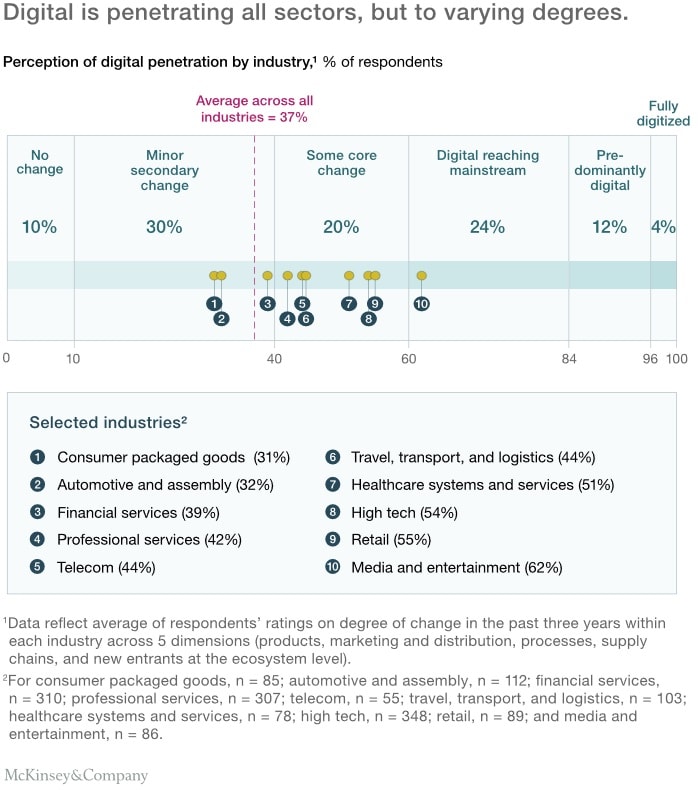
2 Data: Leveraging Big Data
Savvy marketers always looked into the data for consumer insights, product inspiration, consumer trends. It did not matter to them what the form was. However, the data available to marketers was pretty limited.
Most of the data available came in only after significant investment was already done in communication or in the product launch through market research.
With the digital data gathering techniques and analytics, now marketers can track complex behavioral data. Now they have access to something they have never imagined. At times they know more about the consumer than the consumer knows about himself.
This behavioural data is popularly known as Big Data.
The real benefit of Convergence between traditional marketing methods and online marketing methods will happen primarily with big data. With data and convergence, companies can decide what to communicate to a consumer at a specific life stage.
3 Content: Leveraging Consumers information needs
You need to ensure that your organization is tuned to such a requirement.
As a CMO, if you can do it, you will be able to connect with your consumer in the right place at the right time with the right message. It does not matter if it is a Traditional marketing method or digital marketing method.
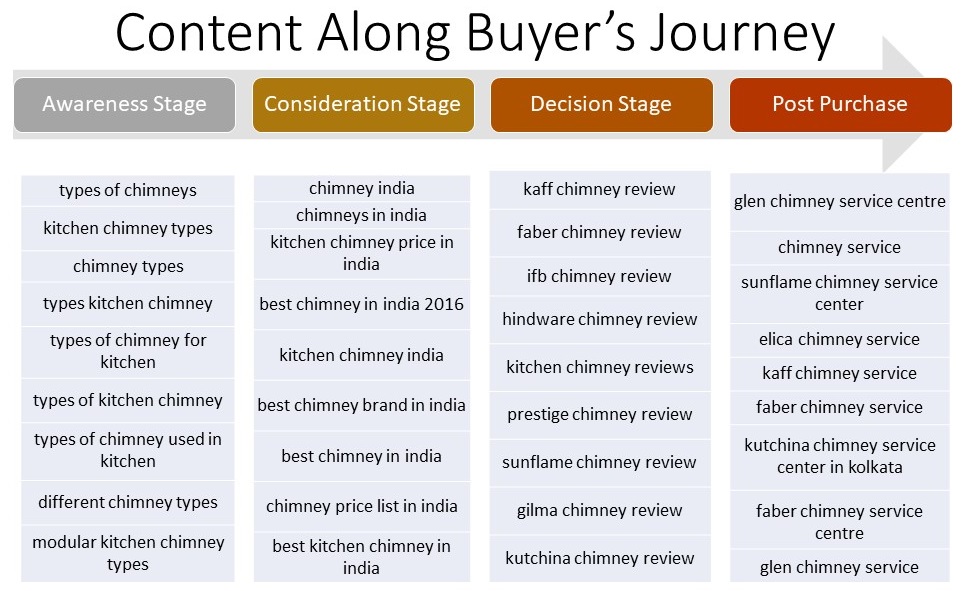
What the above just means:
Depending on the stage of the purchase process, consumer have different types of questions. While in the awareness stage consumer establishes need of a specific type of solution, in the decision stage he actively evaluates different brands.
Therefore different touch points come into picture during this process. As a Brand, if you seamlessly manage these touch-points, the chances are that the customer will choose you.
You know what happens if you lose touch with her during this process.
As a marketer, you need to consider purchase funnel and activate communication tools that help you close the loop.
This is where the convergence between digital marketing media and traditional marketing media come in picture.
4 Brand Messaging: Leveraging Insights of Traditional Marketing
John Wanamaker, a marketing pioneer, famously said:
“Half the money I spend on advertising is wasted; the trouble is I don’t know which half.”
John is not alive today. However, if he were, he would have got his answer today with digital. Today marketing is no longer a guesstimate. With digital marketing, it has become a scientific process to deliver superior results. Cause and effect analysis is much easier to attribute to strategies and actions.
However, the question remains: What to communicate to motivate a consumer to take desired actions?
I am sure that you have also heard the story that the human attention span is reducing(6).
| Attention Span Statistics | Data |
| The average attention span of 2015 | 8.25 seconds |
| The average attention span in 2000 | 12 seconds |
| The average attention span of a goldfish | 9 seconds |
| Percent of teens who forget major details of close friends and relatives | 25% |
| Percent of people who forget their own birthdays from time to time | 7% |
| Average number of times per hour an office worker checks their email inbox | 30 |
| Average length watched of a single internet video | 2.7 minutes |
Well, I am not going to get into the debate of whether it is true or not. I think is it childish to say 8 or 9 or 12 seconds. However, what no one can undeniably say that we have indeed become impatient.
This is where Digital marketing can leverage a lot from traditional marketing expertise. For decades, traditional marketers have mastered the art of emotional messaging as they were plagued with what John said.
To reduce the wastage, they spend a lot of resources to understand consumers. Their focus and understanding of the consumer is something that is an invaluable piece of expertise.
Just imagine the possibilities a CMO has today. They can connect with a customer just at the right time with the right messages, helping them make an informed decision in seconds.
5 Showrooming: Leveraging convergence at point of sale
Showrooming is a phenomenon which is here to stay.

Whether marketers like it or not this is how consumers function today. I can bet that you also do showrooming, so why bother about it when someone else does it with your brand.
If you get your act right, you will provide your prospective consumer delightful experience at both points of sale and online.
Can you count on your fingertips, the number of competitors you have got. Please do not cheat yourself, do count all large and small; well-known brands and regional brands; established brands and start-ups. I can bet, you might end up counting 10 to 20 names depending on the industry you operate.
Now, look at this piece of data. At the start of a purchasing process, consumers generally have 2 or 3 or max 5 brands in their consideration set.
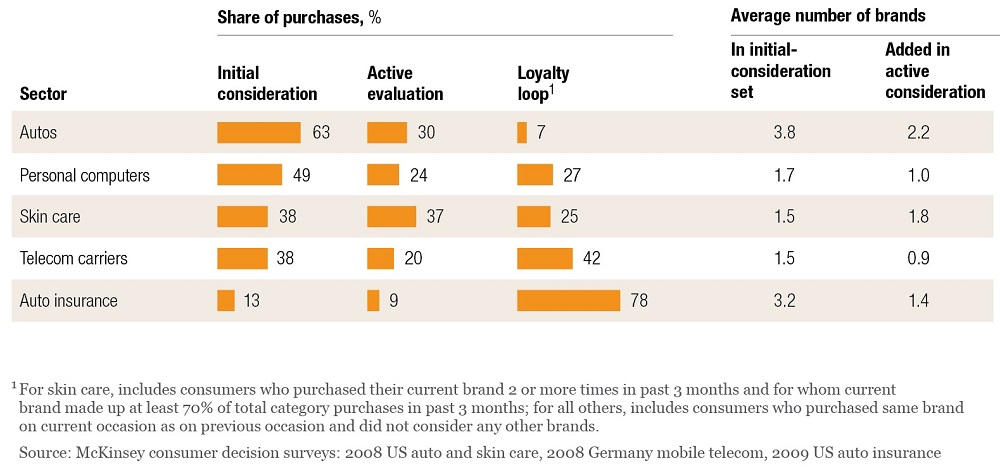
So be happy that the consumer is showrooming and you are actually in his consideration set.
Thank god for that!
Also do not hate him so much for looking at the competition.
Also do not stop here.
6 Consumer: They are building your Brand
Embrace Convergence between Traditional Marketing and Digital Marketing
Go ahead and make sure that you:
- Provide the benefits of digital technology at your retail store
- Provide him free wi-fi
- Ensure your website loads in less than 3 seconds
- Ensure you have provided all the product details
- And you have shopping cart enabled with all kind of payment options.
- And at last, please, please make sure that you have consistent pricing. Pricing is a deal breaker. No consumer will pay you a dime extra to buy the same product at retail. If your pricing is different, believe me, your prospective customer will feel cheated and take their business to your competition.
So do you agree with me or you want me to say more?
So here is the deal:
Recent research(7) conducted by First Data shows that consumers have a keen interest in blending and coordinating activities across online, offline, and mobile settings. These customers are mainly interested in self-checkout using their cell phones, and in receiving special offers when near a store. One-third of consumers surveyed indicated their desire for a seamless shopping experience, meaning any transaction, on any device, at any time.
83% of respondents agreed that they want companies to do a better job of merging online and offline experiences.
So what else you can do to:
Have you heard about iBeacons? This is a Bluetooth technology that can provide location-based offers on specific product ranges.
How Can Marketers Embrace Convergence?
Convergence is happening in consumers life, and it is not going to stop. However, please note that customer is not looking for convergence but convenience. They care a damn about it.
As a CMO you must care about convergence and embrace it. CMO’s and companies that can embrace the convergence of traditional marketing and digital marketing will come out on the top. So How can marketers embrace the convergence of digital and traditional marketing:
- Understand who is your audience. Can you define their persona?
- Find how and where they spend their time online and offline. It is essential to know users behavioural traits.
- Ensure seamless consumer experience between off and use to drive actions.
- Spread out your calls to action between the physical and the digital world.
- Take advantage of technology.
- Build relationships with influencers. You need to connect with influential bloggers.
- Engage with consumers, create content that helps them make informed decisions.
- Observe and leverage emerging consumer trends.
References & Source
- Interaction 2017 by Group M
- GARTNER CMO SPEND SURVEY
- How to benefit from the convergence of traditional and digital marketing, Digital Marketing Institute
- Google’s bad week: YouTube loses millions as advertising row reaches US, The Guardian
- The consumer decision journey. By David Court, Dave Elzinga, Susan Mulder, and Ole Jørgen Vetvik. McKinsey
- Attention Span Statistic.
- Online-Offline Convergence
- The case for digital reinvention, McKinsey Quarterly

